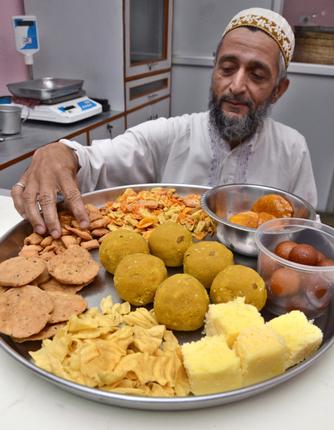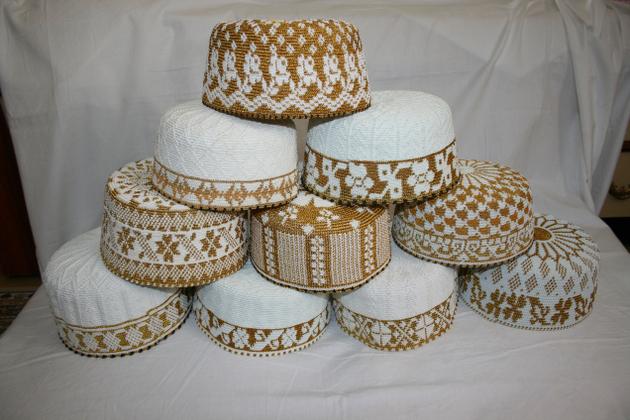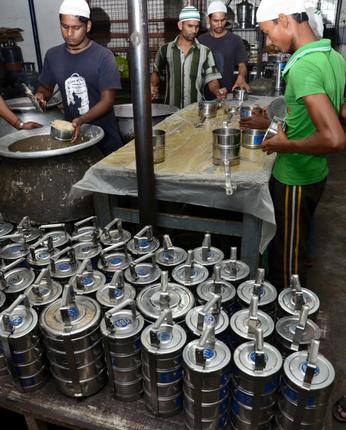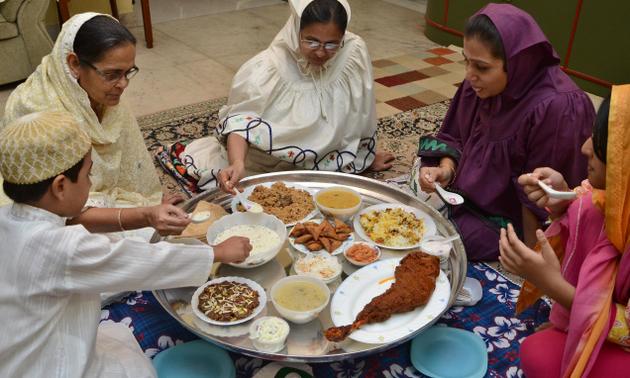
The Dawoodi Bohra Muslim Community, originally from Gujarat, has made Coimbatore its own, yet it retains its distinctive cultural and culinary identity
Evening Namaz has just ended. Men in topis and flowing white kurtas emerge from the mosque. Women in colourful gowns zip through the lanes on their two wheelers. The smell of hot khakras wafts from the nearby sweet shop. Children returning from their evening Arabic and Quran classes, buy savouries from there and run home. The conversation one overhears in a language that sounds like a mix of Urdu, Gujarati and Persian. It is called Lisanud-Dawat. Sound of laughter comes out of a home. The Burhani colony of Coimbatore in Peelamedu wakes up to its night life.
“Many of us have settled here for generations since the time of our great grandfathers,” says Alifiya M Mamoowala who has volunteered to be my guide for the day. “There are around 392 families here. And, we have become a part of this city.”

At the same time we hold onto our tradition,” adds Feroz Y Dak, as he leads me to the office of Aamil Saheb, the community’s religious and administrative head.Aamil Saheb hails from Madhya Pradesh and has been holding this office for the last two years. “The community settled in Coimbatore in the early 1930s. We originate from the Khambat district in Gujarat,” he explains. And they believe they must abide by the law of the land where they live, says Aamil. “I am learning Tamil. And, my children go to a Tamil medium school,” he smiles.
Next, I visit the burhani mithai stall, where Saifuddin Bhai Ahmedabadwala fries hot mathris. His shelves are laden with laarvas, a typical burhani laddoo made of besan and stuffed with raisins. His sweet puris drip sugar syrup and I am told they are a must during Shab-e-barat. But Saifuddin’s road to fame is his gulab jamuns, made with khoya. “Even the locals love it,” he says with pride.
I meet another Saifuddin who is head chef at the Community Food Hall. “I have worked across India I have learnt other recipes by working with the local chefs.” “At the Community Food Hall they prepare free dinners for all the houses in the colony. This is one way of making sure that the ladies of the community get some free time to do what they want,” says Feroz.

“Looks like it is biryani today,” says Feroz as we sniff appreciatively. Inside, there are huge davaras of chicken biryani. Hundreds of tiffin boxes are neatly arranged on the floor. They will be despatched along with rose lassi and raitha. “Each tiffin box carries a number allocated to a house. So, no one uses the vessel used by the others,” says Feroz. Residents can either collect their tiffin boxes at the hall or get them delivered at their door steps. As dusk falls, lights pop on in the kitchens. At Alifiya’s house, Gulshan Y Mamoowala has whipped up a grand meal. As soon as we enter, she welcomes us with a bowl of crystal sugar. “That’s the bohra custom of welcoming the guests with a sweet note,” says Yunus Bhai Mamoowala, her husband. Gulshan’s lemon yellow skirt and a blouse that she wears with a pretty shawl is called jori. “We wear these inside the house. The burqas are called ridas and are worn outside,” says Alifiya.
“Ridas and joris have become a big style statement,” adds Munira Gheewala, who has dropped in to apply mehendi on Alifiya’s daughter’s hands. “During weddings women wear ridas with zardozis and elaborate embroidery, floral panelling and tatting.” Bohra weddings are grand, says Munira. “We apply mehendi on the entire arm of the bride! Our designs are mostly Arabic motifs, featuring creepers and flowers.”
Conversation ceases as Gulshan brings the huge thaal and places it on a stool. The entire family sits around the thaal. “The whole point is to drive home the message of togetherness,” says Feroz. “This strengthens our bond.”
The first thing I am offered is a pinch of salt! “It opens your taste-buds,” says Gulshan. And in bohra cuisine, desserts come first, says Alifiya. Sodena (sweet rice and badam) and Shir khurma, (something like semiya payasam) kick start the fare. The main course has a shoulder of lamb hot from the tandoor, dal chawal palidu and rotis with khichda (haleem). “The signature dish in a burhani cusine is the simple dal, rice and palidu combination. Palidu is a little like rasam. It is cooked with tuvar dal stock, drum stick and regular spices,” explains Gulshan.
We round off the sumptuous meal with sweet paan. As we sit back on the cushions, Yunus shows me the pictures of their ancestral home at Sidhpur, Gujarat. Magnificent havelis, with a dozen windows, mark the bohra colony. “All the traders used to live here. Each house is built close to each other to create community spirit,” says Yunus. “Our family came to Coimbatore 25 years ago to set up business here. We still go back there once in a year,” says Yunus.
As I bid farewell to the Mamoowala family, Gulshan sprays attar on my hands and tells me to rub it on my clothes. “This is for you to always remember the beautiful memories of the evening you spent with us,” she says.
I smell my hand again and smile as the fragrance recreates in my mind the lanes of Sidhpur and its airy havelis.
source: http://www.thehindu.com / The Hindu / Home> Features> MetroPlus> Melanage / by Parshathy J. Nath / Coimbatore – April 25th, 2014
